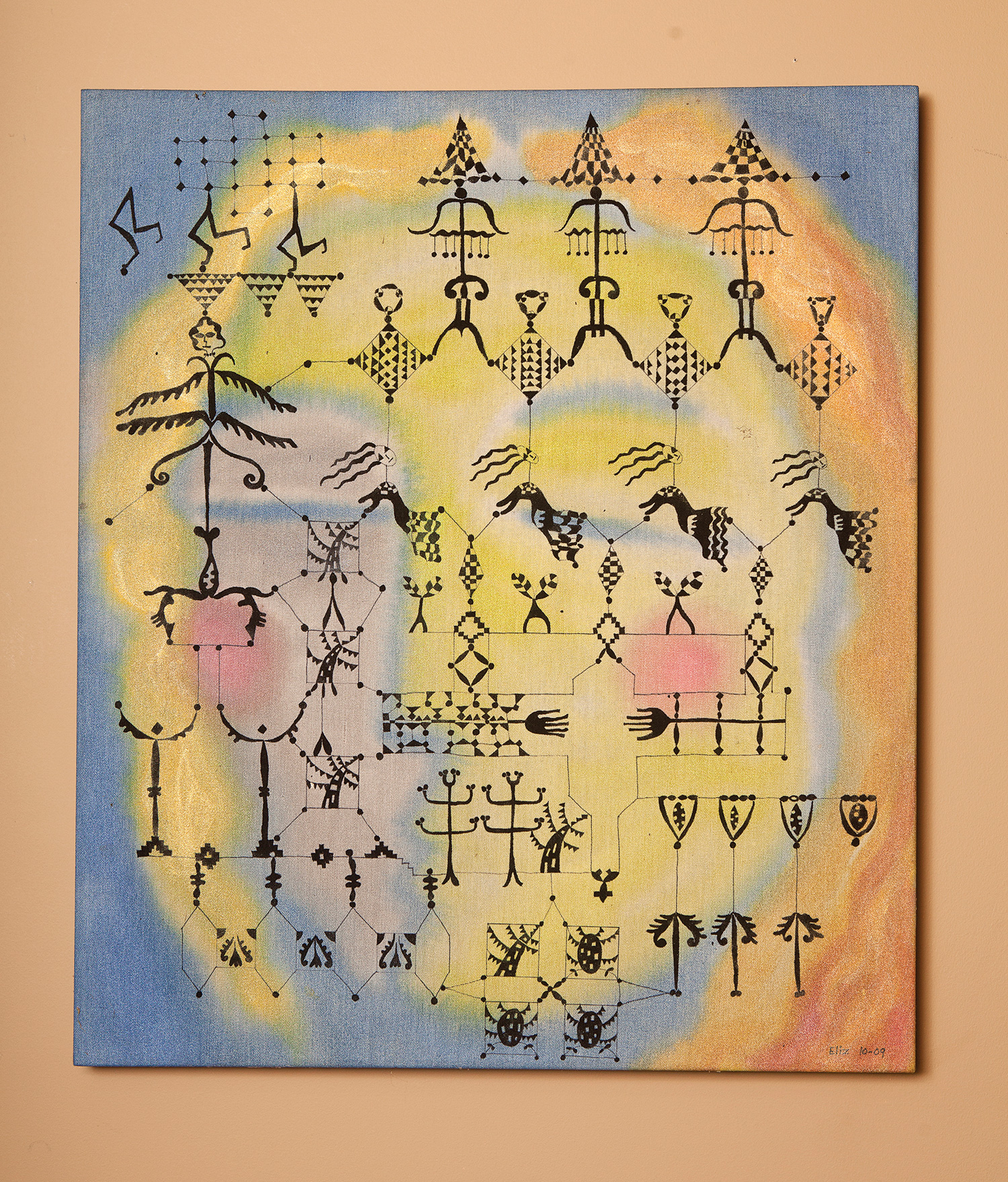
One day some years ago, the Asheville artist Elizabeth Henderson found herself in Indonesia, where she and her diplomat husband were visiting on vacation from his southeast Asian posting. Wandering among the sculptures and stonework of the famed 9th-century Buddhist shrine at Borobudur, Henderson had a kind of artistic epiphany.
“The pyramid-like structure contained hundreds of niches, each with a seated Buddha,” Henderson recalls. “I realized there that the object wasn’t to create something different or individual, but to follow patterns handed down by generations of teachers.”
Even so, Henderson took note of the subtle differences within the standard form of each figure. “Each had a subtle beauty of its own,” she says.
The cultural diversity that Henderson experienced during those years with the Foreign Service — in Thailand, Taiwan, the Azores, and Slovenia, among other postings — was an education in an array of artistic traditions that inform her work in acrylics and watercolor. Each piece draws on ancient patterns and forms, but, like the Borobudur Buddhas, are infused with inventive twists of her own.

The result lends the adjective “visionary” to her style. “I call myself [that] because the paintings are continually evolving visions,” she says. “The images are borrowed from many sources and have mutated from picture to picture to become icons. These do have meaning for me, but I am most interested in having the viewer bring his own meaning to them.”
Influenced not only by Buddhism, but by elements in Southwest Native American art and in Aztec ritualistic paintings, much of Henderson’s work features stylized human heads and torsos, botanical forms, and mandala-like patterns. Stick-like figures dance in circular formations. Tiny turreted buildings float through the canvases, a reflection of Henderson’s affection for the great cathedrals of Europe. All are rendered against muted background washes of pale color, solid charcoals and blacks, or delicately rendered architectural shapes. They nod to the work of the two artists Henderson most admires: the colorfully geometric creations of Paul Klee and the nature-inspired watercolors of Charles Burchfield, himself most often described as a visionary artist. “I never liked oil painting, though I did go through periods when I worked in oils,” Henderson says. “Water-based paints allow me to create washes over which to superimpose outlined figures and structures. This has been my M.O. since I began painting.”

It came early to her — so early that Henderson finds it hard to pin down a specific point when she began making art. “I’ve been steady at it from a very young age,” she says. “I took classes in sculpture and painting since the seventh grade.” Courses at Boston’s Museum of Fine Arts and color-theory studies at the Massachusetts Institute of Technology came after high school, followed by a BFA from the Corcoran School of the Arts and Design in Washington. Although both her mother and father died when Henderson was very young, her adoptive parents encouraged her artistic instincts and those of a sister, who is now an accomplished pianist. Henderson’s daughter, born in Thailand and now raising a family in Polk County, also makes art, and is the reason for Henderson’s move to Asheville ten years ago.
Each of Henderson’s canvases begins with the background wash, over which she draws her figures in ink according to her mental image of the overall finished work. Acrylics are then applied over the ink drawing. “But lately I’ve been painting directly, without forms and structures, on canvas, wood, and watercolor paper,” she notes. “I began to do this as a way out of my ‘coloring in’ box.”
Her palette has grown brighter in more recent work, with a simpler composition. “My latest projects are geometric structures,” she has noted. “This expresses my interest in architectural forms, symmetry and asymmetry, and positive/negative space.”
Some of this later work consists of intertwined lines or lightly outlined edifices. Two “Dream House” paintings combine Western architectural forms with figures and shapes reminiscent of Aboriginal art. Most compelling, though, is a more elaborate work, “Sphinx,” with a blurred woman’s face overlaid with showers of lacy geometric shapes, like a veil.
“The whole process has to do with spirituality, creativity as a reflection of my creator,” Henderson said. “Since the caveman, I see the world and art to be spiritual in nature.”
Examples of Elizabeth Henderson’s art can be seen at elizabethhendersonartist.com, by visiting the gallery 310 Art (191 Lyman Street, #310) in Asheville’s River Arts District, or at her studio by appointment. 828-298-2147.
